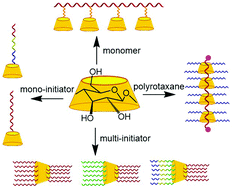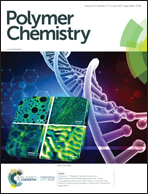Functional materials generated by allying cyclodextrin-based supramolecular chemistry with living polymerization
Abstract
Cyclodextrin molecules are cyclic oligosaccharides that display a unique structure including an inner side and two faces on their outer sides. Each face and the inner core can be selectively functionalized with polymers so that nanoscale materials with complex structures can be formed. Materials based on cyclodextrin with controlled architectures can be synthesized by taking advantage of the flexibility, simplicity, and availability of reagents of the atom transfer radical polymerization (ATRP) technique. Combining supramolecular chemistry enabled by cyclodextrins and ATRP yields polymers with a unique macromolecular architecture such as star polymers with large numbers of branches. Herein, we describe the preparation and properties of cyclodextrin initiators, cyclodextrin monomers, and polymers attached to cyclodextrin via the “grafting to” method or host–guest interactions. The strategies for pre-functionalizing cyclodextrins, subsequent ATRP, and self-assembly of the obtained polymers are compared and discussed. This class of polymers has found applications in various biomedical areas, as templates for fabricating inorganic nanoparticles, and for separating chiral organic molecules.



 Please wait while we load your content...
Please wait while we load your content...